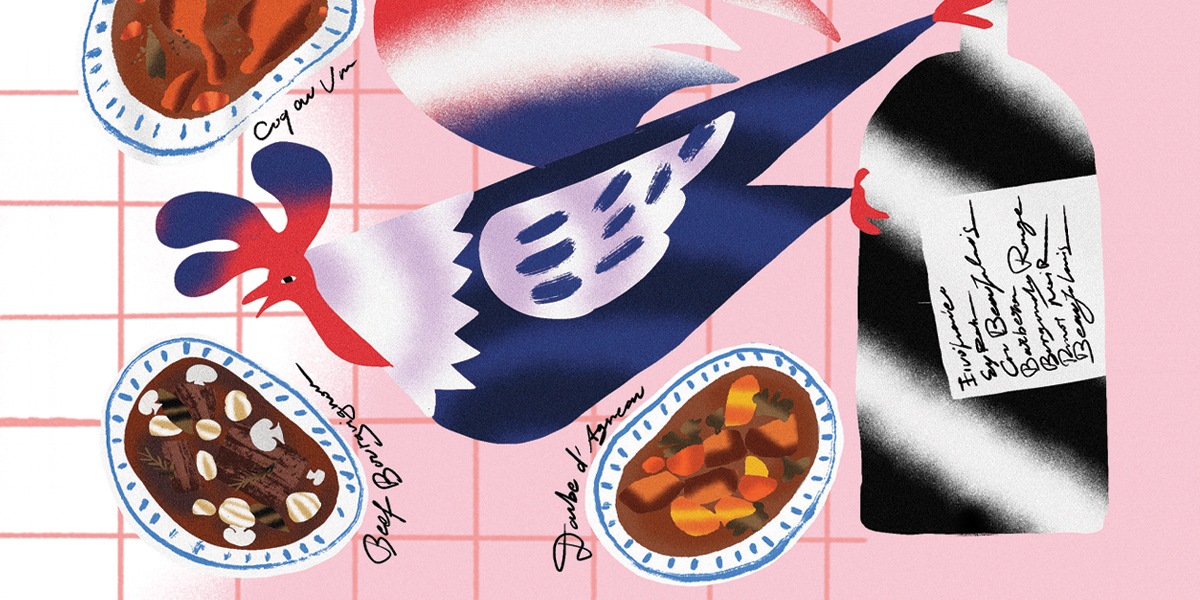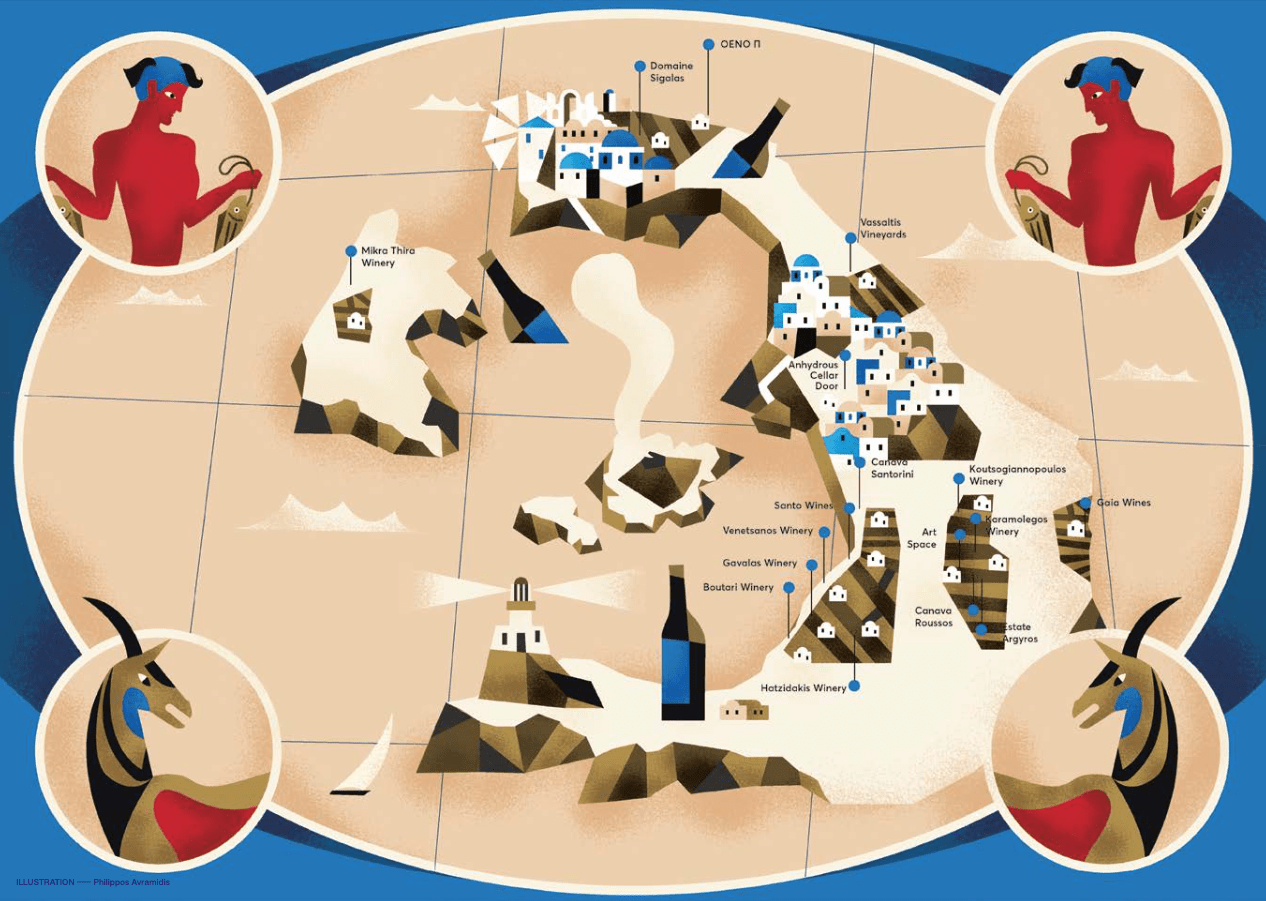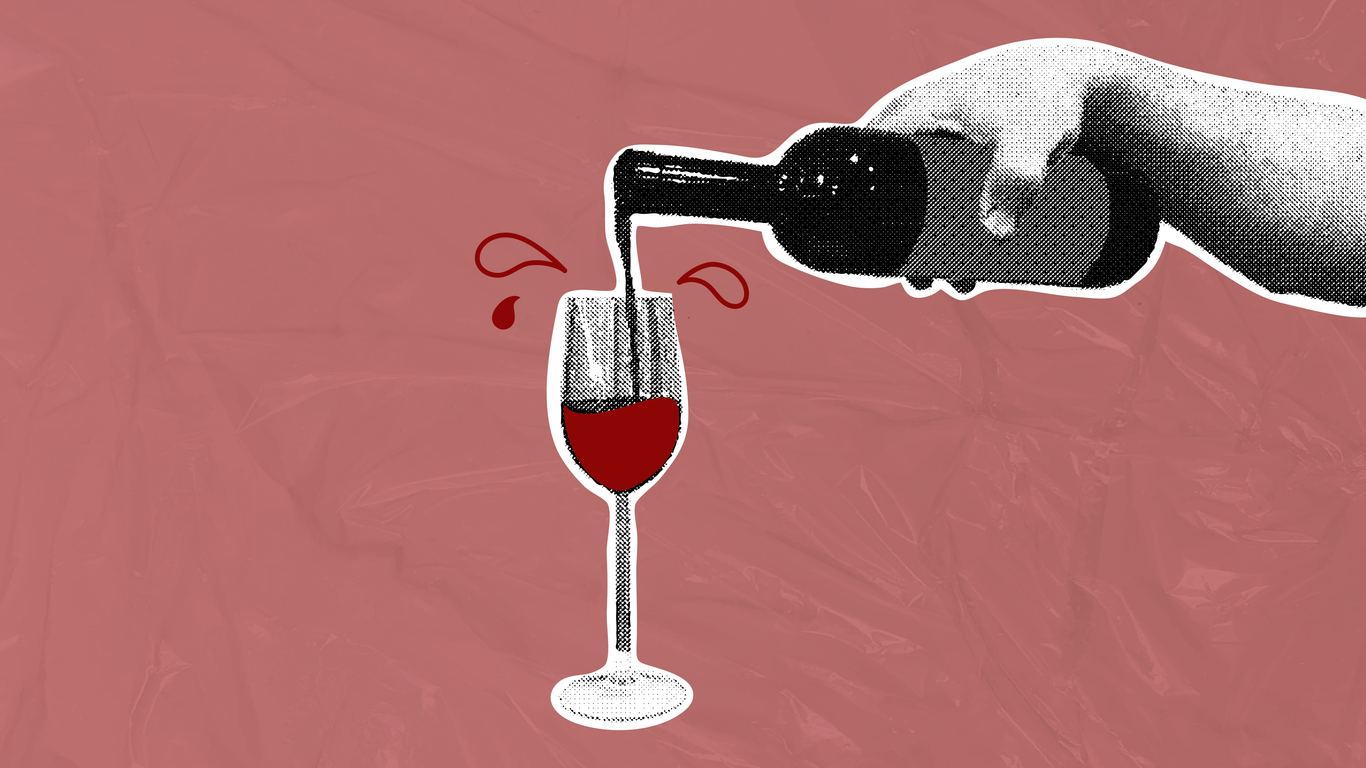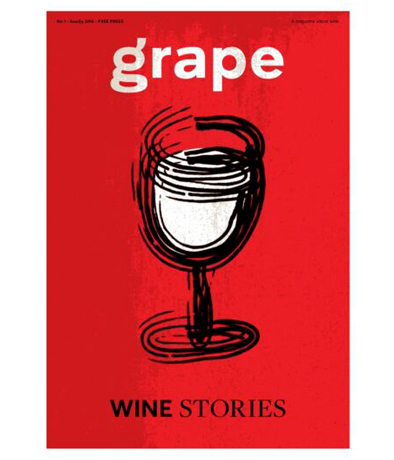
The most famous destination in Greece attracts millions of tourists each year. Famous for its sunsets, its savage beauty, its breathtaking sea views and its luxurious hospitality, the island does not really need much of an introduction.
What may not be obvious, however, to the unsuspecting visitor is its long tradition in winemaking, which was, in fact, one of the main occupations of the island’s inhabitants for many centuries. Its volcanic topsoil, deposited after the eruption of the Santorini Volcano in or around 1646 BC, created a unique terroir for Assyrtiko, the indigenous grape variety which is becoming more and more popular in the wine world.
During the Middle Ages, the sweet wines of San- torini, produced from sundried grapes, were highly regarded by the Venetians who traded them under the name Vino Santo, or Vinsanto. It was not until the second half of the 20th century, however, that the dry wines of the island, considered until then inferior to the sweet ones, begun to gain in popularity. The 1980s saw the arrival on the island of the Boutaris family, the leading Greek winemakers of the period, and winemaking in Santorini entered a whole new phase. The tra- ditional wineries (called canavas) were replaced by modern wineries with state-of-the-art equip- ment, and these newer enterprises have been producing extremely high-quality wines. Unfor- tunately, the island’s unique terroir – along with its vines, some of which are over 200 years old – is in danger because of over-construction on the island, driving some of the local winemakers to seek alternatives, acquiring land on the much smaller neighboring island of Thirasia.
A visit to Santorini simply isn’t complete without a visit to at least some of its wineries, all of which are open to anyone who wishes to find out more about the long oenologi- cal tradition and the unique terroir. There are organized tours and wine tastings, food and wine pairings and even cooking classes based on traditional local products such as yellow split-peas, cherry tomatoes and capers.
AIDANI
A white grape variety used in a blend with Assyr- tiko to produce Santorini wines such as Nychteri and Vinsanto. Vinified as a varietal, it produces wines of a floral character with aromas of trop- ical fruit.
ASSYRTIKO
Santorini’s signature white grape variety, it’s rap- idly gaining worldwide recognition. This grape produces wines of medium aromatic intensity, but with characteristic strong minerality, and has a great ageing potential.
ATHIRI
A white grape variety that’s also used in the blends of Santorini wines; when vinified as a vari- etal, it can give wines of a fruity character, with medium to low acidity.
CANAVA
In the local dialect, the term for a traditional win- ery. These structures were usually underground (or partially subterranean) spaces hewn from the rock or sheltered by nearby buildings.
KOULOURA
The traditional method of training Santorini’s vines into a basket-like shape to protects them from the strong winds and the high summer temperatures that dominate on the island.
MAVROTRAGANO
A very rare red variety from Santorini that was, until quite recently, at risk of extinction. This variety combines dense red fruit with roasted coffee and smoke, robust tannins and a rich and min- eral mouth.
NYCHTERI
Santorini’s traditional wine, made from a blend of Assyrtiko, Athiri and Aidani. Traditionally, grapes destined for Nychteri were pressed during the night after the harvest, to protect the juice from the heat of the day. That is, in fact, how it got its name; the Greek word for “night” is “nychta”. (N.B. This wine is often spelled “Nikteri” or “Nykteri” as well.)
VINSANTO
Santorini’s sweet wine, made predominantly of Assyrtiko, with Aidani and Athiri in the blend as well. It’s made from late-harvest grapes which have been dried in the sun for 12-14 days. It fer- ments and then ages for at least 24 months in oak barrels.

Με την εγγραφή σας στη λίστα των παραληπτών θα λαμβάνετε το newsletter του grape!





Με την εγγραφή σας στη λίστα των παραληπτών θα λαμβάνετε το newsletter του grape!